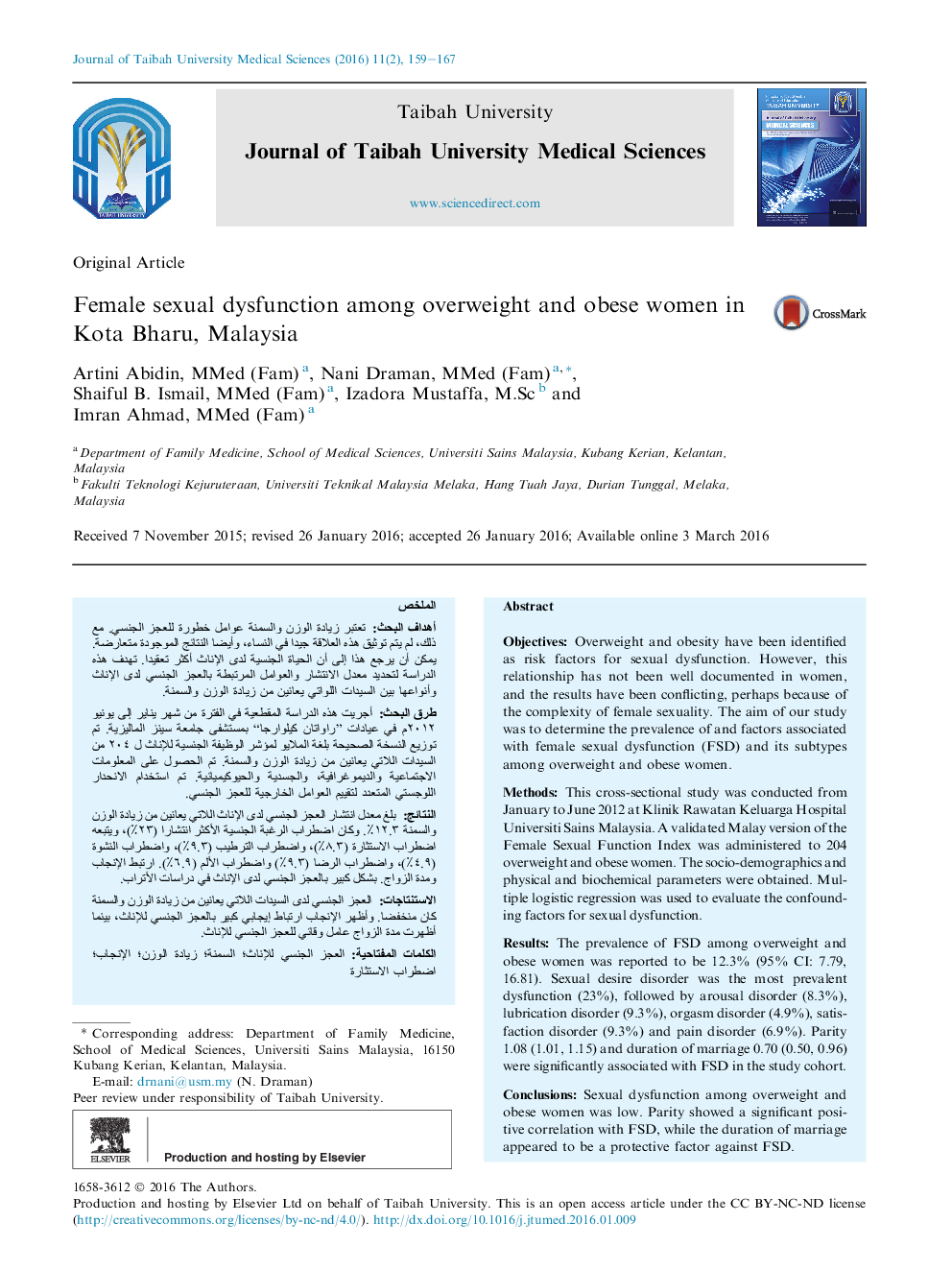| Article ID | Journal | Published Year | Pages | File Type |
|---|---|---|---|---|
| 3484331 | Journal of Taibah University Medical Sciences | 2016 | 9 Pages |
ObjectivesOverweight and obesity have been identified as risk factors for sexual dysfunction. However, this relationship has not been well documented in women, and the results have been conflicting, perhaps because of the complexity of female sexuality. The aim of our study was to determine the prevalence of and factors associated with female sexual dysfunction (FSD) and its subtypes among overweight and obese women.MethodsThis cross-sectional study was conducted from January to June 2012 at Klinik Rawatan Keluarga Hospital Universiti Sains Malaysia. A validated Malay version of the Female Sexual Function Index was administered to 204 overweight and obese women. The socio-demographics and physical and biochemical parameters were obtained. Multiple logistic regression was used to evaluate the confounding factors for sexual dysfunction.ResultsThe prevalence of FSD among overweight and obese women was reported to be 12.3% (95% CI: 7.79, 16.81). Sexual desire disorder was the most prevalent dysfunction (23%), followed by arousal disorder (8.3%), lubrication disorder (9.3%), orgasm disorder (4.9%), satisfaction disorder (9.3%) and pain disorder (6.9%). Parity 1.08 (1.01, 1.15) and duration of marriage 0.70 (0.50, 0.96) were significantly associated with FSD in the study cohort.ConclusionsSexual dysfunction among overweight and obese women was low. Parity showed a significant positive correlation with FSD, while the duration of marriage appeared to be a protective factor against FSD.
